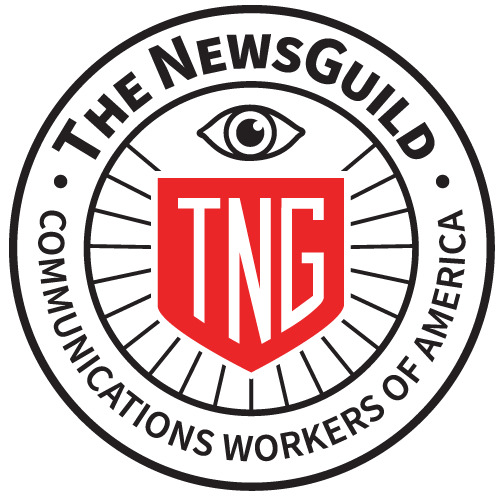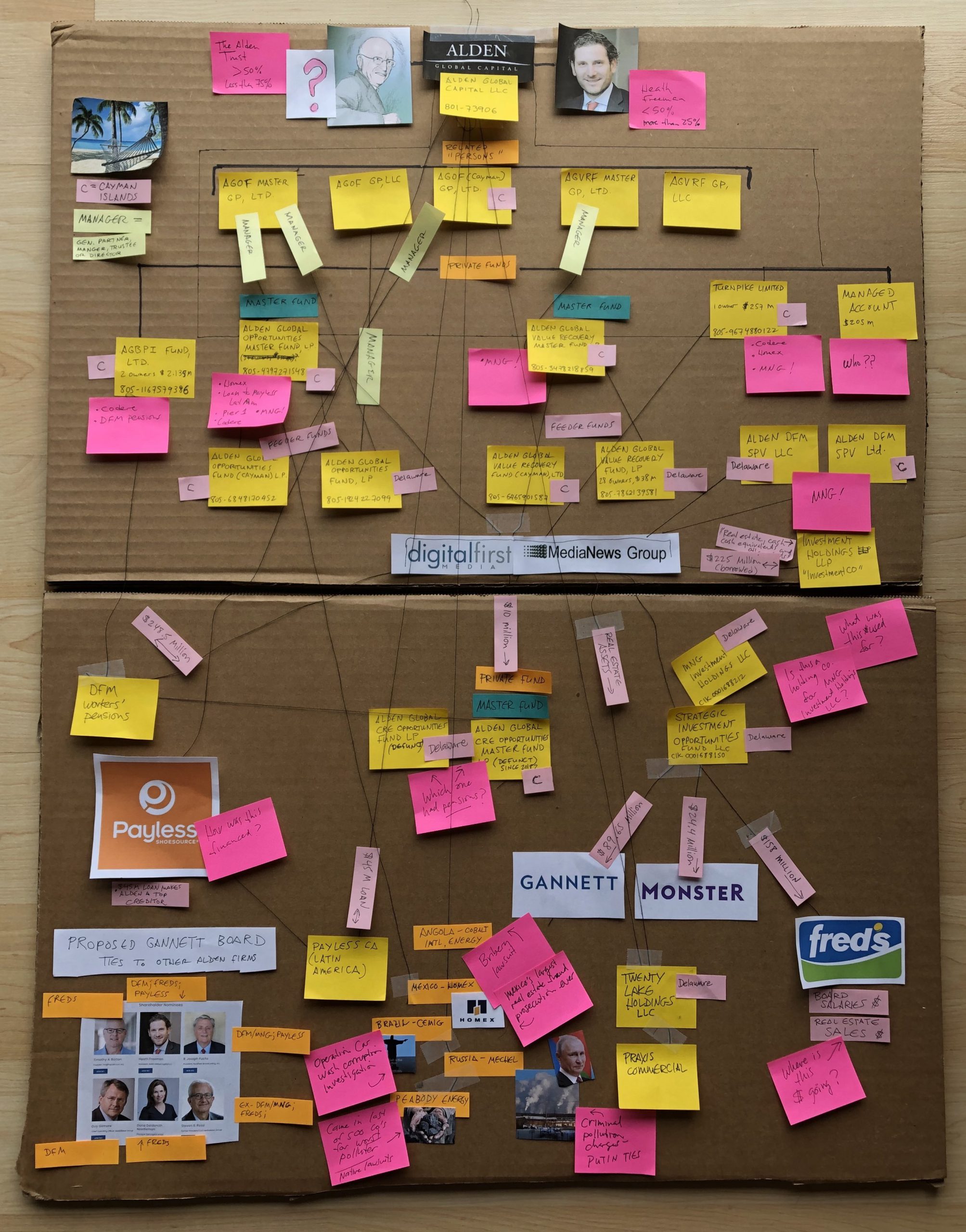In which we map Alden’s layers of shell companies to try to figure out who owns your hometown newspaper
This article first appeared on June 24, 2019, on the website of DFMworkers.org.
By Julie Reynolds
Almost every crime movie these days has a crazy wall. It’s one of those bulletin boards detectives put together while they’re trying to solve a crime, and they usually have lots of strings connecting people, places, companies and crime families.
You know, like the Avon Barksdale wall in The Wire
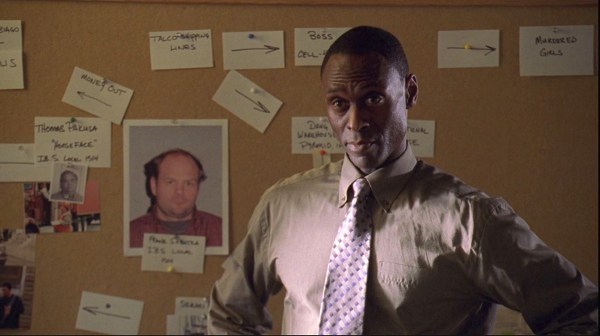
Crazy walls are a great tool for investigative reporting, too, especially if you’re a visual person like I am.
I decided to make a crazy wall to better understand the relationship between Alden Global Capital’s various funds and investments as well as the money flow to and from its Digital First Media (also known as MNG Enterprises) newspaper chain.
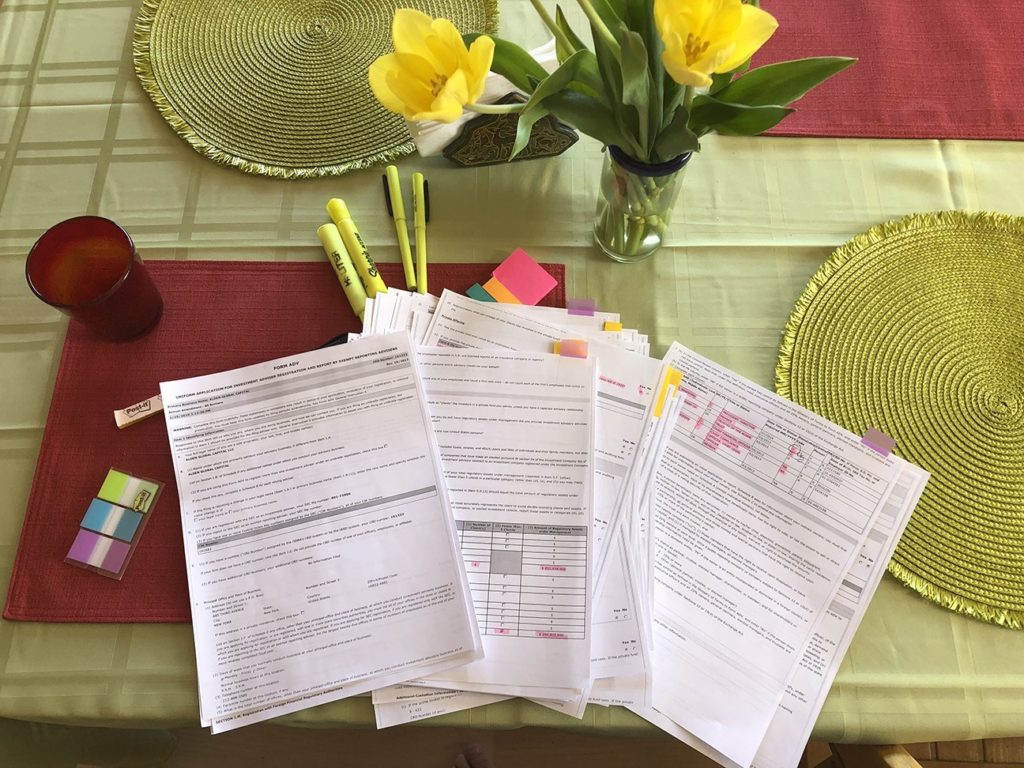 I had no idea what I was getting into. Because Alden and Digital First are not publicly traded companies, finding such information isn’t easy. Add to that the fact that Alden chooses to incorporate its entities in tax secrecy havens like the Cayman Islands, and you can imagine the challenge. But armed with tape, scissors and stickies, I pressed on.
I had no idea what I was getting into. Because Alden and Digital First are not publicly traded companies, finding such information isn’t easy. Add to that the fact that Alden chooses to incorporate its entities in tax secrecy havens like the Cayman Islands, and you can imagine the challenge. But armed with tape, scissors and stickies, I pressed on.
First, I read all 58 pages of Alden’s latest ADV filing, which is one of the few reports required of a privately held company by the Securities and Exchange Commission. That was a fun couple of hours spent marking each of Alden’s various investment companies with different-colored flags.
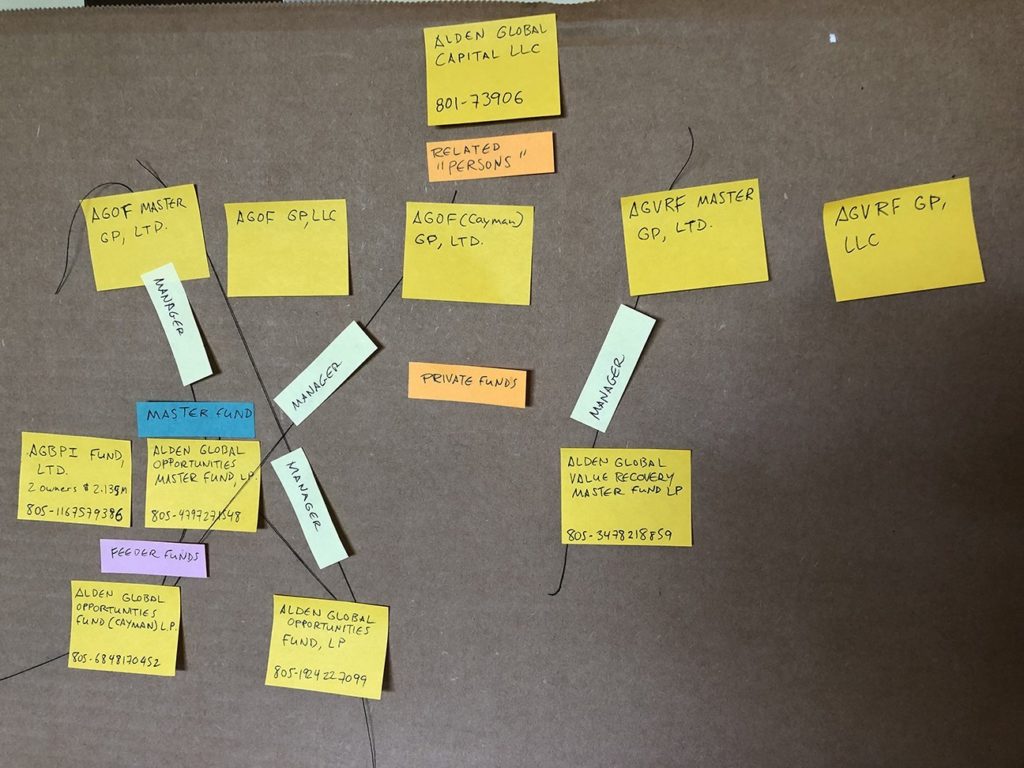 I was ready to start my wall. But wait! I also had to re-read filings from two court cases, because lawsuits and bankruptcy filings are often the only places you can find details about companies that are, well, less than transparent.
I was ready to start my wall. But wait! I also had to re-read filings from two court cases, because lawsuits and bankruptcy filings are often the only places you can find details about companies that are, well, less than transparent.
A crazy wall has to be changed around as new facts or questions pop up, which is why I use sticky notes. I could have used a bulletin board, but I don’t own one, so I recycled a cardboard box and got to work. I used black thread to mark the connections and various colored papers to denote different kinds of transactions.
Yes, Alden is that complicated. Here’s what emerged over the two-plus days of putting the Alden Crazy Wall together.
- I finally figured out where, exactly, the Digital First Media newspaper chain is held. Five different Alden funds control DFM/MNG, and all but one are incorporated in the Cayman Islands:
Alden Global Opportunities Master Fund, L.P.
Alden DFM SPV LLC
Alden Global Value Recovery Master Fund, L.P.
Alden DFM SPV Ltd.
Turnpike Limited
- The overlap of directors for various Alden-related companies is stunning — directors have been shuffled from newspapers to pharmacy and shoe store chains. Even when those businesses bleed money or go bankrupt, Alden executives make millions from salaries, bonuses and management and performance fees.
- Alden makes money even when its companies lose. According to its latest investors’ brochure, Alden collects the standard 2 percent annual management fees for the roughly $1 billion it has in Regulatory Assets Under Management. That’s $20 million a year, no matter how poorly those investments perform.
- A LOT of money has been taken out of Digital First Media newspapers to use for other investments. It’s hard to tell if some money transfers I gleaned from court filings overlap, but I’ve counted roughly $520 million on the low end and up to $745 million on the high end. All taken from DFM papers and workers’ pensions for Alden’s own investments. (I didn’t include the purchases of the Orange County Register or Boston Herald, as those could be considered typical investments for a newspaper chain.) At the very least, we’re looking at half a billion dollars stripped from hometown papers across the country — money that could have been reinvested in those papers and communities.
- I ran into a lot of dead ends, because Alden shutters and creates new companies (i.e. investment funds) all the time. And these funds own other funds, and they have lots of similar names. I stuck to the ones Alden currently states it owns in the SEC’s Form ADV, plus a few now-defunct funds that were involved in important transactions during the past few years.
- Of the 21 Alden shell companies diagrammed, 9 were incorporated in the Caymans. Seven were incorporated in Delaware (almost as much of a tax secrecy haven as the Caymans) and the rest are unknown. Finding out who the human beings are behind these entities is close to impossible.
So what does all this tell us?
It tells us that the true owners of scores of U.S. newspapers controlled by Alden are likely impossible to identify.
It means that Alden’s — and, by extension, DFM’s — monies are confusingly blended into a mishmash of investment funds primarily owned by unknown people who may be from anywhere in the world.
It shows a deliberate layering of offshore and domestic shell companies that have few reporting requirements because they are privately held and located in tax havens.
Is this what we expect from our local news sources? Americans are used to knowing who owns their local paper — and have always felt free to criticize them. Even if readers hated the William Randolph Hearsts, the Rupert Murdochs or the Grahams, they knew who they were. They could judge their politics, biases and allies and decide what they thought of the coverage.
With Alden, though, we simply don’t know. All we have is a web of offshore LLCs and limited partnerships located in corporate secrecy havens.
It’s time for readers to demand answers from the publishers of Alden’s newspapers. And it’s time for lawmakers to investigate the grave problem that hedge fund news owners like Alden present, and to find ways to penetrate the layers of corporate secrecy.
An informed democracy demands it.
